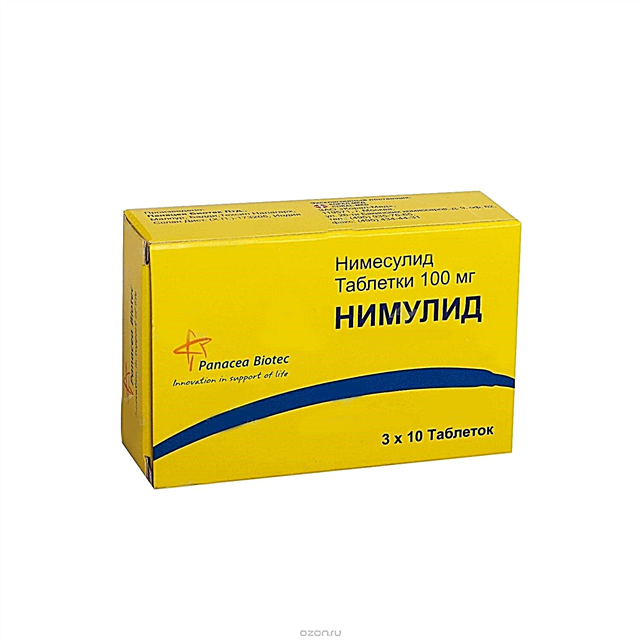
The corpus luteum plays a key role in ensuring the preservation of pregnancy in the early stages. And it is not surprising that doctors pay a lot of attention to its parameters and assessment. However, a woman who came for an ultrasound scan to make sure of her pregnancy or to see how the baby is growing may be embarrassed by information about a certain yellow body, since many do not even know about its existence.

What it is?
The corpus luteum is a temporary formation of the type of endocrine gland, which forms in the right or left ovary after a woman ovulates. On the surface of the sex gland, during the first half of the female cycle, a bubble matures - a follicle, inside which a female reproductive cell develops. By the middle of the cycle, under the influence of certain hormones, the follicle membranes become thinner and ruptured.
The egg, ready for fertilization, comes out and is captured by the villi of the fallopian tube. Fertilization takes place in the tube, after which the ovum, which has become a zygote, begins its journey to the uterus. If the oocyte is not fertilized within 24-36 hours, then it dies.
Regardless of whether the fateful meeting of the sperm and the egg has occurred or not, a corpus luteum is invariably formed on the surface of the gonad after the release of the oocyte in place of the former follicle and is there as long as there is a need for it. The main function of the temporary gland is to produce a sex steroid - the hormone progesterone, which is necessary for the normal functioning of the body of the fair sex in the second half of the menstrual cycle.

If a woman has not become pregnant in the current cycle, then the temporary gland disappears and menstrual flow begins at the appointed time. But everything changes during pregnancy... The gland itself was invented by nature in order to help the embryo at first, while there is no placenta, to survive.
Progesterone produced by the gland is very important for the prolongation of pregnancy - it makes preparatory changes in the endometrium for the upcoming implantation of the embryo, "builds up" it, ensures the absence of menstruation, under the action of this hormone, the cervical mucus thickens in the cervical canal, forming a mucous plug that reliably protects the cavity uterus from outside penetration. During pregnancy, progesterone relaxes the uterine muscles, preventing contraction and possible miscarriage.
Thus, a corpus luteum is formed after the release of the egg in both pregnant and non-pregnant women, but in the latter, the temporary gland exists for a shorter time. therefore the very presence of a corpus luteum in the ovary, which can be established using ultrasound diagnostics, does not yet indicate that the lady is pregnant, but quite convincingly suggests that she was ovulating in the current cycle.
If ovulation for some reason did not happen, the corpus luteum for natural reasons does not form.

How is it formed?
The formation of a temporary gland proceeds in accordance with certain stages. The entire life span of this temporary formation is called the corpus luteum phase. Here are the main stages of the life of the gland in non-pregnant women:
- Proliferation - follicular membranes, the integrity of which was broken at the time of ovulation, begin to "group" into a characteristic fold, a gland is formed.
- Vascularization - the cells of the gland divide, it begins to be actively supplied with blood due to the germination of the blood network.
- Flourishing - the period of maximum productivity of the temporary gland, when the production of hormones is at an active pace in the highest concentrations.
- Regression - dystrophic changes begin inside the gland. It gradually decreases, reduces and gradually stops the production of hormones altogether, becomes a whitish scar tissue, which eventually dissolves on its own. The gland is lost to return in the next menstrual cycle.

If a woman conceives a baby in the current cycle, then after the flowering stage there is no regression, and the temporary formation itself begins to be called gravidar (corpus luteum graviditatis), or corpus luteum of pregnancy. It becomes such immediately after the embryo is attached to the endometrial layer of the uterus.
Immediately after implantation, the chorionic villi begin to produce a special active substance - chorionic gonadotropin (hCG). The task of this hormone is to preserve the performance of the corpus luteum, since the need for progesterone during pregnancy is high.
HCG contains a temporary gland in a working state until a full-fledged placenta is formed, which is able to take over the function of producing progesterone and a number of other active substances necessary for the continuation of gestation.
Thus, outside of pregnancy, iron in the fair sex lives 10-13 days after the release of the egg. During pregnancy, the life span of the gravid corpus luteum increases, it is active up to 11-14 weeks of pregnancy. At the end of the first trimester, the young placenta begins to work, and at the beginning of the second trimester, the stage of regression begins for the gravid corpus luteum. It proceeds in the same way, the gland begins to decrease, the secretion of progesterone is reduced by it, a whitish body is formed and gradually no trace remains of it.

How do sizes change?
The size of the gland is quite individual, they directly depend on how much hormones the corpus luteum produces, and therefore can indirectly talk about possible problems. Until the implantation took place, the corpus luteum grows constantly, its size at the time of embryo attachment is comparable to the size of a sweet cherry. At the very early stages of gestation, a size of 10 to 30 mm is considered the norm.
If pregnancy did not occur, there was no fertilization, the implantation attempt was unsuccessful, then after the flowering stage, when the gland grows to record parameters (up to 23-27 mm), its gradual decrease begins. If pregnancy takes place, the size of the gland remains practically unchanged, only slight individual fluctuations by week are permissible:
- after implantation, the size of the gland is from 14-15 to 30 mm;
- by 5-6 weeks, a young placenta begins to form, and a decrease in the size of the gland gradually starts.


It is difficult to say what the gravid corpus luteum should be at 4 weeks of gestation or at 6 weeks, since it all depends on how this woman had it at the beginning of pregnancy... And 16 mm, and 17-18 mm, and 19-20 mm, as well as 21, 24 and 25 mm can be the norm, since all these values fit into the average idea of the norm of the size of the temporary gland during pregnancy.
If the dimensions are too small (9-12 mm), the doctor may suspect that the expectant mother is producing little progesterone, and prescribe laboratory blood tests for progesterone. If the size of the corpus luteum is impressively large (from 40 mm and above), a luteal cyst of the corpus luteum is assumed.
What does ultrasound show?
An ultrasound diagnostician can visually determine the temporary gland as early as 3-4 days after ovulation. This fact itself will in no way be a sign of pregnancy or its absence. It's just that it will allow you to clearly understand whether there was ovulation in the current cycle.
Usually the gland is found on the left or right ovary, where the follicle rupture actually happened. Less often, with double ovulation, two yellow bodies are determined on one ovary or simultaneously on the right and left. This suggests that a woman can become a mother of twins, provided that both eggs are fertilized and successfully implanted.
To assess whether the corpus luteum is normal, its size alone is not enough. The thickness of the endometrium is measured and the blood flow rate in the gland is determined. This is what allows us to talk about how normally pregnancy develops in the early stages.


The absence of a corpus luteum in the second phase of the cycle, even with a delay, is a sign that there was no ovulation and there is no pregnancy, and the delay is caused by a gynecological pathology or hormonal disorder.
Failure
Insufficiency of the corpus luteum is a fairly widespread problem. It is associated not only with a decrease in the gland in size relative to the norms, but also with a lack of progesterone, hypofunction of the temporary gland can lead to miscarriage, a frozen pregnancy. It is a lack of progesterone that is a common cause of chronic miscarriage or infertility.
Often, such a diagnosis is made to women who, before pregnancy, suffered from an irregular cycle, often faced with a delay in menstruation, as well as with a shortening of the cycle. The likelihood of pregnancy is reduced, but if this happens, then low concentrations of progesterone may not be sufficient for the embryo to grow and develop safely in the womb.
But this is not a verdict. If blood tests confirm the fears of doctors and the level of progesterone is lowered, then supportive medications - progesterone preparations - are prescribed to save the baby.
They are taken according to the scheme recommended by the doctor, in strict accordance with the prescribed dosage. Often, such funds have to be taken before the end of the first trimester.

Cystic formation
Exceeding the size of the corpus luteum may be due to the formation of a cyst. Usually it appears at the site of a follicle, which was never able to burst during ovulation, and an egg cell remained inside it. There are usually no symptoms, only some women with hypersensitivity complain of a pulling sensation in the lower abdomen. You should not be afraid of a luteal cyst - in the overwhelming majority of cases it dissolves on its own in 2-3 cycles, even if it is very large - up to 8 centimeters.
Also, do not panic if, along with the fact of a long-awaited pregnancy, the doctor confirms the presence of a luteal cyst on the ovary. It has no effect on the baby or pregnancy. Usually, by the 20th week of gestation, such cystic formations dissolve on their own, nothing needs to be treated. But we must not forget about the possible complications - twist the legs of the cyst and its rupture. The likelihood of this is low, but it should not be ignored. Therefore, a woman needs to visit her doctor more often, to carefully monitor her own condition.
If there is a sharp pain, accompanied by bleeding, as well as a drop in blood pressure, you should immediately call an ambulance. It should be noted that in most cases, when urgent surgical intervention is required, the operation is performed laparoscopically and the pregnancy can be saved.


Useful Tips
The corpus luteum during pregnancy, of course, is very important, but a woman should not attach too much importance to its size and be nervous about deviations in one direction or another. Sometimes the small or large size of the temporary gland is an individual feature, and this is not associated with any pathologies.
Therefore, it is not recommended to independently decipher the ultrasound result, trying to understand what the size of the corpus luteum can mean in a given situation. On the basis of the ultrasound protocol, diagnoses are not made, and therefore the woman must be prescribed additional examinations if there are suspicions of an unfavorable course of the early gestation period.
If you left the doctor's office with an ultrasound protocol in your hands indicating the size of the corpus luteum, but did not receive appointments for blood tests for progesterone and referrals to the hospital to maintain pregnancy, then there is absolutely nothing to worry about.

Excitements and worries can do much more harm to a child than a small or large corpus luteum on the ovary of his expectant mother.
For how important it is to support the corpus luteum function, see the next video.



